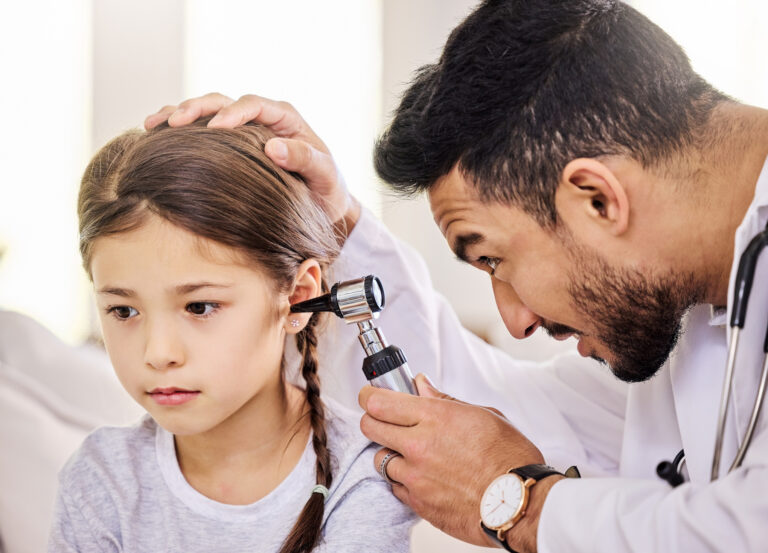Ear Infections 101: What to Watch For and When to See a Doctor
April 23, 2025

Your doctor may refer to an ear infection as acute otitis media. It’s an infection behind the eardrum in a space that’s typically filled with air. This space is known as the middle ear.
Ear infections are more likely to occur in children, but adults can get them.
In many cases, an ear infection does clear up on its own. Some people experience recurring ear infections that can cause issues with hearing. While you should start by observing the infection and managing pain, there may come a time when you need a doctor’s intervention.
Ear Infection Symptoms
There are some ear infection symptoms you’ll see. These include:
- Pain in the ear
- Tugging on the ear
- Loss of appetite
- Frequent headaches
- Fussiness
- Crying more than they normally do
- Fever
- Problems with balance
- Problems with hearing
These and other symptoms might lead you to believe you or your child has an ear infection.
Ear Infection Treatments
While most ear infections clear up on their own, there are some steps to take. Here’s a look at the ear infection treatments.
Observation
Keep an eye on the person with an ear infection. You want to look for ear infection symptoms that are getting worse, such as a higher fever or additional crying and fussing.
Pain Management
During the observation phase, you need to manage pain. This can include the use of over-the-counter pain relievers, such as Tylenol or children’s Tylenol. You can also use ear drops for pain.
Antibiotics
If the ear infection doesn’t clear in a few days, your doctor might choose to use an antibiotic. The most commonly used antibiotic for an ear infection is amoxicillin
Topical Treatments
Sometimes, a doctor opts for a topical treatment. These are ear drops with antibiotics, antifungals, and pain relievers, or some combination of the three.
Surgical Intervention
A child who continues to get ear infections or one that doesn’t resolve may need surgical intervention. During the surgery, tubes are placed in the ears to drain fluids.
Ear Infections in Adults
Ear infections do occur in adults. These infections are typically due to an illness or injury. Let’s explore the differences:
Symptoms in Adults vs. Children
In adults, the ear infection symptoms tend to be:
- Pain
- Fever
- Problems with balance
- Fluid drainage
While children may experience these symptoms, as a parent, you’re more likely to notice that your child is tugging on their ears. They may also be more cranky than normal, with normal consoling methods not working.
Treatment Differences
While most ear infection treatments for pain that doesn’t resolve in a few days are antibiotics, a young child may need antibiotics more quickly than an adult. The biggest difference between the treatments is that with children, doctors tend to take a more conservative approach, relying on pain relievers and antibiotics before looking at more invasive treatment.
How to Prevent Ear Infections
There are ways to minimize the risk of ear infections for children and adults. These include:
Vaccinations
You want to make sure that you and your child are up to date on their vaccinations. This includes flu shots in the winter months and the pneumococcal vaccine.
Proper Ear Hygiene
Keeping ears clean can reduce the risk of an ear infection. You should never place anything smaller than an elbow in your ear because you can damage the ear canal. Use a warm wash cloth to clean the outer ear.
CareSpot Can Help
If you or a loved one has an ear infection that gets worse or won’t resolve on its own, it might be time to seek medical attention. You might wonder, can urgent care treat an ear infection? CareSpot is ready to help. We’re the urgent care near you. If you need help with an ear infection, walk into one of our locations today.
